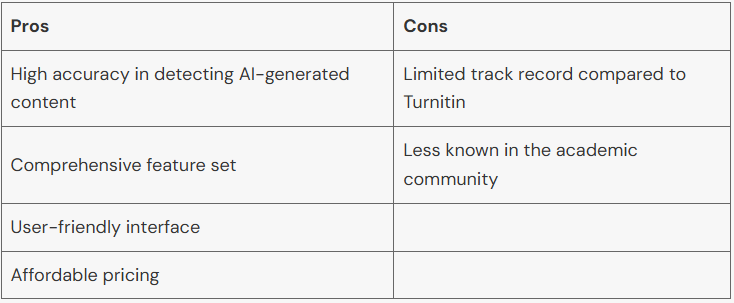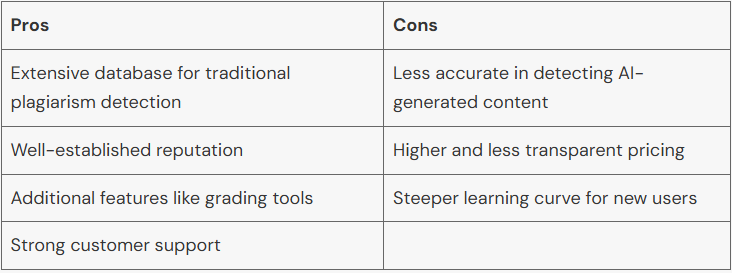Plagiarism checkers are key to keeping academic honesty intact. Two well-known ones are Winston AI and Turnitin. Each has its own special features and strengths, fitting various needs. This piece breaks down these tools, highlighting their differences, advantages and disadvantages, and when to use each one.
Overview of Winston AI and Turnitin
Winston AI is a newcomer in the plagiarism detection world. It’s recognized for its skill in spotting AI-made content, which is crucial now with AI writing tools like ChatGPT growing in use.
Turnitin has long been a go-to for schools in finding copied work. It added a feature to catch AI-generated stuff recently, but the feedback on it has been varied.
Key Differences
Accuracy
Winston AI is known for being really good at spotting content made by AI. This is because it uses advanced algorithms that are specifically trained on AI-written text. Studies done by independent sources found that Winston AI catches AI-written plagiarism better than Turnitin.
Turnitin is great at finding regular plagiarism, but it has a harder time with content made by AI. Its AI detection tool, launched in 2023, got some criticism for sometimes marking things wrong and not being as accurate.
Features
Winston AI gives a wide range of features. It can spot rewritten content and make detailed reports on originality. This helps understand any plagiarism found.
Turnitin is great for finding plagiarism the usual way and has extra tools like grading and connections with learning systems. But, it isn’t as strong in detecting advanced AI content and rewriting.
Ease of Use
Both tools have user-friendliness as a key focus. Winston AI’s interface is very easy to use, allowing users to navigate and use its features with ease. Its simple design helps users understand what the tool can do quickly.
Turnitin also has a user-friendly interface, but new users might find it harder to learn because it has many features. Its link with schools’ learning systems can make the first setup trickier for individuals.
Pricing
Winston AI is easier on the wallet, with clear and affordable prices. This opens it up to more people, like solo users and small groups.
On the other hand, Turnitin’s prices aren’t as clear and can change depending on how big the institution is and what they need. This tailored approach helps institutions get exactly what they need, but it might not be as easy for individuals and smaller groups to access.
Pros and Cons
Winston AI

Turnitin

Use Cases
Winston AI fits well for those who want to spot content made by AI. It’s great for people, teachers, and schools seeking a low-cost, easy-to-use tool that highlights up-to-date checking for copying.
Turnitin works best for schools that need a strong setup for spotting typical plagiarism. With its large database and extra features like grading tools, it offers a full solution to keep honesty in academics.
Conclusion
Deciding on Winston AI or Turnitin hinges on what you need. Winston AI excels in spotting AI-made content, boasts a user-friendly design, many features, and is budget-friendly. Turnitin, meanwhile, is a leader in spotting traditional plagiarism, with many features and strong customer support, though it costs more and has a few gaps in detecting AI content.
FAQs
Can I use these tools to check for plagiarism before submitting my work? Both Winston AI and Turnitin let users upload their work. They then give a report showing any found plagiarism.
Are there any free alternatives to these tools? Some schools provide tools to check for plagiarism. But, these might not be as advanced or accurate as Winston AI or Turnitin.
Which sectors or users benefit the most from these tools? Turnitin is a popular tool in schools and universities. Teachers, professors, and students use it to check if academic work is original. On the other hand, Winston AI helps individuals, self-learners, and professionals who want to spot AI-generated content reliably.
